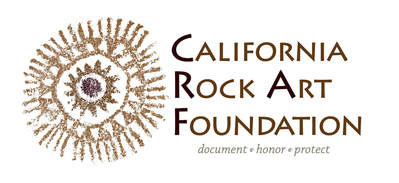Rock Art Code of Ethics
1. Rock art sites may be considered sacred by living peoples and are to be treated with respect.
2. Rock art visitation and research shall be subject to all local, state, and national antiquities laws, appropriate regulations, and property access requirements.
3. Recognize the cultural heritage values of rock art and always show respect for rock art and the cultures that created it. Ask permission before publicly sharing photos. Honor the requests of appropriate Native American or other groups who ask that photos of restricted rock art not be posted or published.
4. Rock art site visitation, recording, and research shall be non-destructive with regard to the rock art itself and any associated archaeological remains. Do not attempt to remove graffiti, chalk, lichen, bird droppings, or anything else from rock art. Do not touch or apply anything to the rock art or surfaces around it.
5. Soil shall not be moved or removed for the purpose of exposing subsurface rock art. Don't collect or disturb artifacts or features at a rock art site.
6. Don't allow children, pets, or inattentive people to behave carelessly around rock art sites. Dislodging rocks can cause extensive damage to a site.
7. Minimize the number of vehicles going to a site. Stay on existing roads and trails.
8. Don't camp or build fires within one-quarter mile of a rock art site.
9. Specific locations and directions to rock art sites shall not be posted or published unless the sites are fully known and open to the public or managed for visitation. Remember that smart phones and GPS enabled cameras embed specific site location data within the photo that others can use to find the site - remove GPS and location information and ask permission before publicly sharing photos.
10. Speak out when needed to prevent damage to rock art. Report new destruction or vandalism.Rock art sites may be considered sacred by living peoples and are to be treated with respect.
2. Rock art visitation and research shall be subject to all local, state, and national antiquities laws, appropriate regulations, and property access requirements.
3. Recognize the cultural heritage values of rock art and always show respect for rock art and the cultures that created it. Ask permission before publicly sharing photos. Honor the requests of appropriate Native American or other groups who ask that photos of restricted rock art not be posted or published.
4. Rock art site visitation, recording, and research shall be non-destructive with regard to the rock art itself and any associated archaeological remains. Do not attempt to remove graffiti, chalk, lichen, bird droppings, or anything else from rock art. Do not touch or apply anything to the rock art or surfaces around it.
5. Soil shall not be moved or removed for the purpose of exposing subsurface rock art. Don't collect or disturb artifacts or features at a rock art site.
6. Don't allow children, pets, or inattentive people to behave carelessly around rock art sites. Dislodging rocks can cause extensive damage to a site.
7. Minimize the number of vehicles going to a site. Stay on existing roads and trails.
8. Don't camp or build fires within one-quarter mile of a rock art site.
9. Specific locations and directions to rock art sites shall not be posted or published unless the sites are fully known and open to the public or managed for visitation. Remember that smart phones and GPS enabled cameras embed specific site location data within the photo that others can use to find the site - remove GPS and location information and ask permission before publicly sharing photos.
10. Speak out when needed to prevent damage to rock art. Report new destruction or vandalism.Rock art sites may be considered sacred by living peoples and are to be treated with respect.

